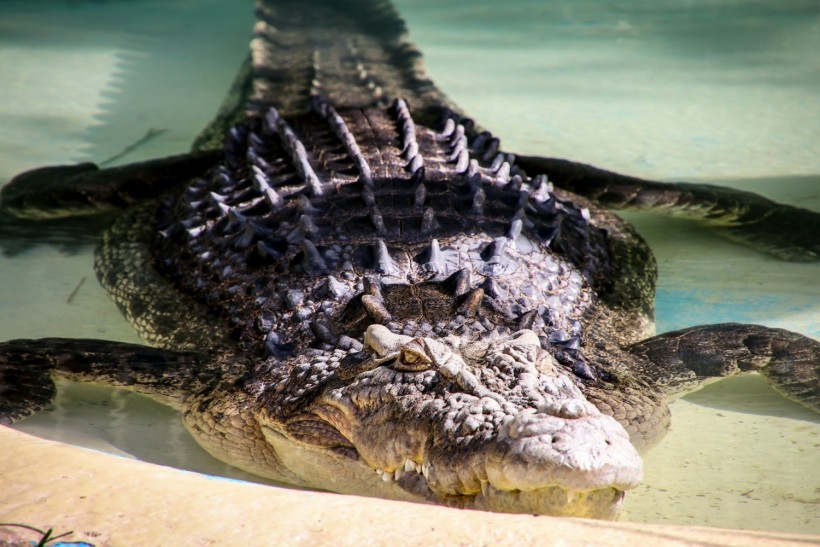Alligators have been observed submerging their bodies in frozen water while sticking their snout into the surface to survive the cold snap in North Carolina and Texas in recent days. Reports earlier this week show that American alligators are entering a state of 'torpor' known as brumation, which is the reptilian and amphibian counterpart of hibernation found in some mammal species.
Since torpor is the shorter version of hibernation, brumation is only specific to reptiles and amphibians that enter a condition of mental and motor inactivity with lowered biological processes, including body temperature and metabolic rate. Seeing alligators in a state of being "frozen solid" in ponds during winter may seem bizarre but it is a common behavior among the reptilians to survive.
Regardless, hibernation and torpor are processes that allow some animals to survive, especially under conditions with limited food and water resources. Both voluntary biological mechanisms also occur when external environments are harsh or not conducive to withstand long-term. Unlike some mammals, humans are unable to enter a state of torpor.
Alligator Cold Snap Survival

Alligators, unlike crocodiles (which are all tropical species), are very sensitive to cold, according to the not-for-profit organization PBS. However, being a member of the order Crocodilia, alligators like other members of the order such as crocodiles rely on their external environments to survive through temperature regulation.
When it comes to cold snap survival, alligators are experts on this ordeal since these wild animals can sense an upcoming sudden surge of cold air when they feel differences in water temperature. It is for this reason alligators try to survive by submerging their bodies in frozen water, just like under the North Carolina and Texas ponds.
In North Carolina, several alligators were reportedly found in a frozen state inside giant ice cubes at Swamp Park near Ocean Isle Beach. In Texas, an alligator was also observed to be frozen in an icy pond but its snout is sticking up through a small, icy hole in Beaumont, Texas. A video posted on TikTok shows a frozen alligator at Beaumont's Gator Country.
@gatorcountrytx #alligatorsoftiktok #gatorcountrybmt #hibernation #fyp #garysaurage ♬ God's Country - State of Mine & Drew Jacobs
Also Read: Alligators Use Their Snouts in Frozen Lakes Like Snorkels to Survive Winter
What is Brumation?
Brumation, as mentioned earlier, is a type of torpor, and experts have long confirmed that this period of dormancy commonly occurs in reptiles during the colder months. This process can be considered as one of the means of how reptiles such as alligators survived for millions of years. After all, animals engaging in torpor and hibernation can survive for a prolonged period of time even without food and water.
In this context, scientists in previous reports clarify that sleep is different from both torpor and hibernation, a concept often mistaken by many. This means that hibernating mammals, for instance, do not sleep during the whole winter. Instead, it only enters a state of deeper and longer state of torpor.
Related Article: What Animals Hibernate and Why Humans Cannot?
© 2024 NatureWorldNews.com All rights reserved. Do not reproduce without permission.



![Roundworms with Short Memories 'Stop Forgetting' When Frozen or Given Lithium [Study]](https://1471793142.rsc.cdn77.org/data/thumbs/full/70295/280/157/50/40/roundworms-with-short-memories-stop-forgetting-when-frozen-or-given-lithium-study.jpg)

